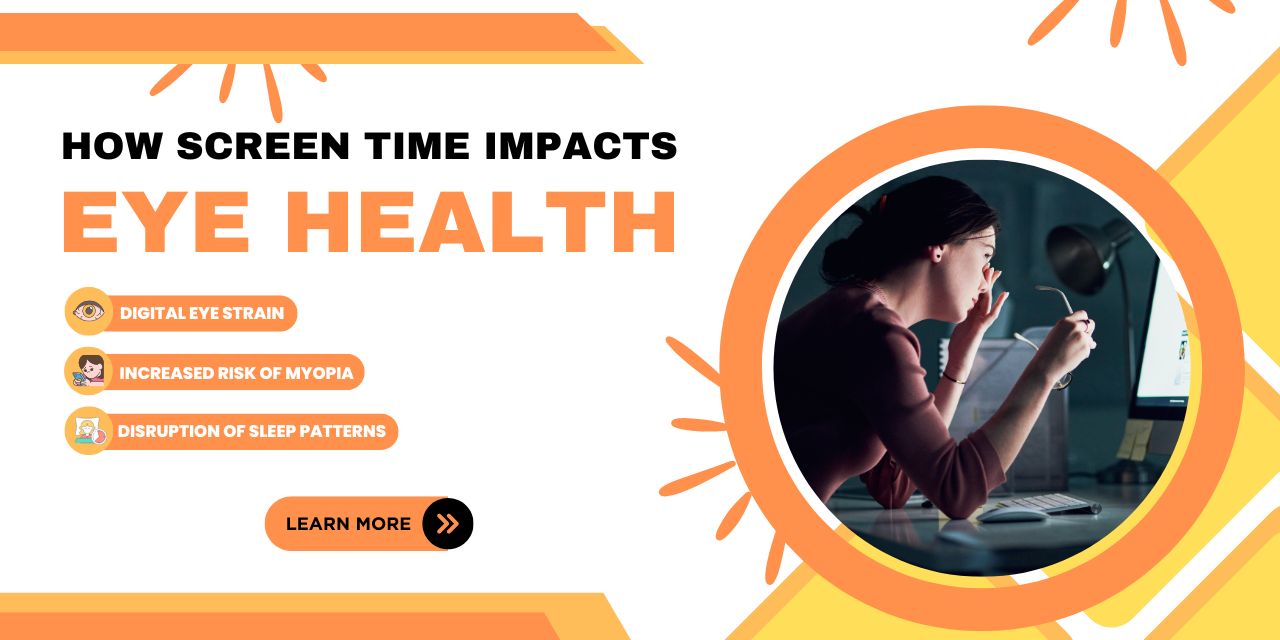In today’s digital age, screens are omnipresent. From smartphones and tablets to computers and televisions, our lives are intertwined with technology. However, the increasing amount of time spent in front of screens, especially for children and teenagers, is raising concerns about eye health and overall well-being. Implementing regular screen breaks can significantly impact eye health and contribute to a brighter, healthier future.
The Importance of Screen Breaks
The term “digital eye strain,” also known as computer vision syndrome, refers to the discomfort and vision problems caused by prolonged screen use. Symptoms include dry eyes, blurred vision, headaches, and neck pain. These issues arise because screens often cause us to blink less frequently, leading to decreased moisture on the eyes and increased strain.
Research indicates that excessive screen time, particularly among children, can lead to worsening vision and even contribute to the development of myopia (nearsightedness). This condition is becoming increasingly common, with studies suggesting that up to 80% of children in some regions may develop myopia due to extensive screen use.
Understanding the 20-20-20 Rule
One of the simplest yet most effective strategies to combat digital eye strain is the 20-20-20 rule. This guideline recommends that every 20 minutes, you should look at something 20 feet away for at least 20 seconds. This practice helps reduce eye strain by allowing your eyes to refocus and relax. Encouraging children to follow this rule during their screen time can help mitigate some of the negative effects associated with prolonged use.
Implementing Screen Breaks in Daily Routine
To ensure that screen breaks become a natural part of daily life, consider the following strategies:
👉 Set Screen Time Limits
Establish clear boundaries for recreational screen time. The American Academy of Pediatrics recommends no more than two hours of recreational screen time per day for children aged 6 years and older. Balance this with physical activities and other non-screen-based hobbies.
👉 Incorporate Physical Activity
Use screen breaks as an opportunity to encourage physical movement. Activities such as stretching, walking, or playing a sport can help alleviate the physical strain associated with prolonged screen use.
👉 Create a Screen-Free Zone
Designate areas of the home, such as the dining room or bedrooms, as screen-free zones. This encourages more face-to-face interaction and reduces the amount of time spent in front of screens.
👉 Educate on Good Screen Habits
Teach children the importance of maintaining proper posture, adjusting screen brightness to reduce glare, and taking regular breaks. Awareness of these habits can help promote better eye health.
The Long-Term Benefits
Implementing regular screen breaks is not only crucial for immediate eye comfort but also beneficial for long-term vision health. By incorporating these practices into daily routines, individuals can reduce the risk of developing serious vision problems and promote overall well-being. For children, these habits can foster a balanced approach to technology use and encourage healthier lifestyle choices.
For specialized care and guidance on managing digital eye strain, consult Dr. Datinder Batish at Dr. PreetInder Singh Eye Hospital in Patiala. Their expertise can help mitigate the effects of prolonged screen use and protect your child’s vision.
conclusion
As screens continue to play a significant role in our lives, prioritising eye health through regular screen breaks is essential. By adopting simple strategies like the 20-20-20 rule, setting screen time limits, and promoting physical activity, we can help ensure a brighter, healthier future for ourselves and the younger generation. Taking care of our eyes today will pave the way for better vision and overall health tomorrow. For professional retina specialists in Patiala, consult Dr. Datinder Batish, at Visit Dr. Preet Inder Singh Eye Hospital for more information call 9041109006.

